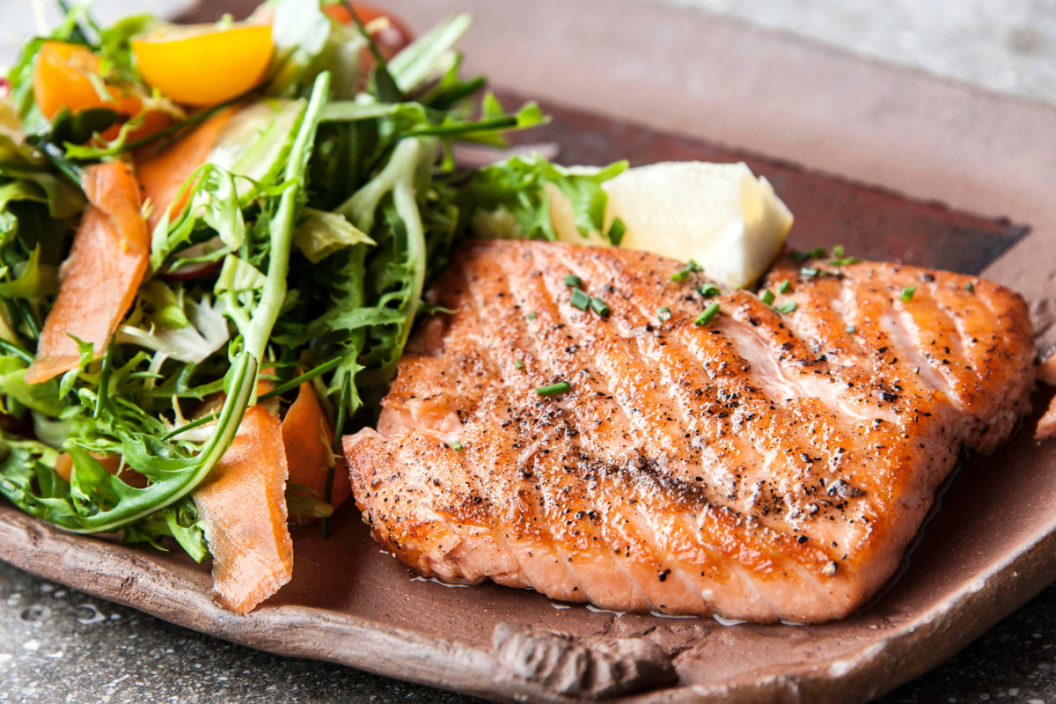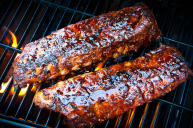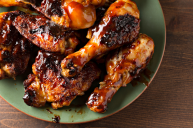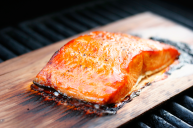Avid home grillers sometimes like to expand their horizons beyond "typical" American cookout grub, and grilled salmon is often considered a sea protein that's well-suited to the grill's high heat and smoky flavors. But if you've never tried to grill salmon before, you might have a few questions. How do you select grilling salmon at the fish counter? How do you prep the fish for grilling, and exactly how should you grill the salmon? Luckily, we—with the help of several professional chefs who specialize in seafood—are here to provide all that and more.
Videos by Wide Open Country
When it comes to fish that cook nicely on the grill without much need for adjustments or maneuvering, salmon counts among the best, according to seafood expert and recipe developer Rima Kleiner of Dish on Fish. "Salmon is so easy to prepare that you can literally throw it on the grill without having to worry about trimming off fat," Kleiner tells us.
Pescatarian chef and cookbook author Stephanie Harris-Uyidi agrees, adding that, "Most salmon varieties work well on the grill due to this species' high (good) fat content." The fat prevents the salmon from drying out when cooked over high temperatures, and the rich, meaty flavor and texture of salmon is a fitting match for the smoky aromas produced by the grill.
Types of Salmon
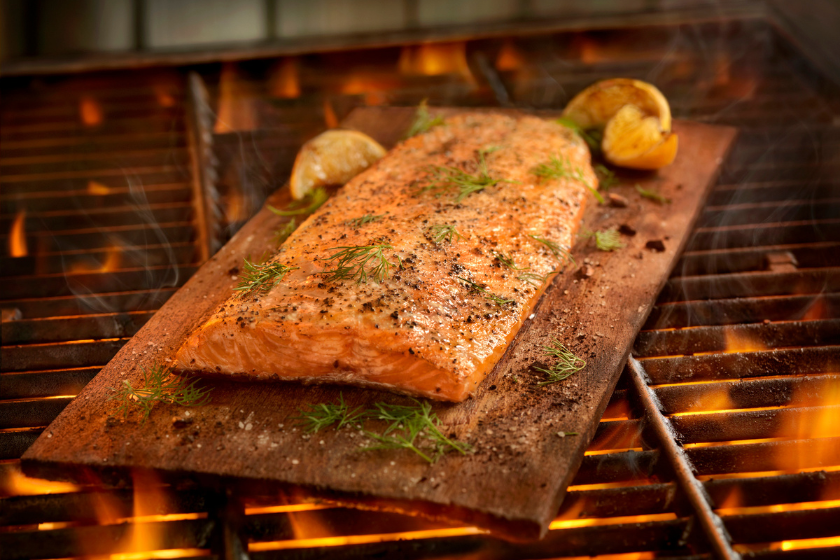
iStock/Getty Images
As Harris-Uyidi says, salmon is a universally grill-friendly fish, and you'll be able to make a tasty grilled dish with any version you find at your local fish counter. That said, Harris-Uyidi does have a few specific recommendations for salmon types: "Wild king salmon and sustainably-harvested Atlantic salmon are my favorites because they cook up succulent and tender. Although delicious, coho [salmon] and sockeye [salmon] can lose moisture fast when barbecued, so [I like to] save these varieties for the oven or the stove top."
Visual and olfactory clues can give you an excellent sense of whether a piece of salmon is suitable for grilling. "Stay away from salmon that has brown spots on the belly or skin that is dried or curled up. When buying fish steaks or fillets, check to make sure the flesh is bright and firm, not soft or mushy. Make sure it doesn't smell fishy and doesn't feel slimy," advises executive chef Craig Riker of Finch & Fork in Santa Barbara, California.
Our sources overwhelmingly agree that fresh, wild-caught salmon produces the most flavorful and tender meat. However, if you can't locate wild-caught salmon at your local store, "'Flash frozen' [salmon] is a good option as well. It's almost as if the salmon has been inserted into a time capsule that ends up on your grill!!" insists culinary director Greg Torrech of Atlantic Fish Company in Boston, Massachusetts.
How To Grill Salmon
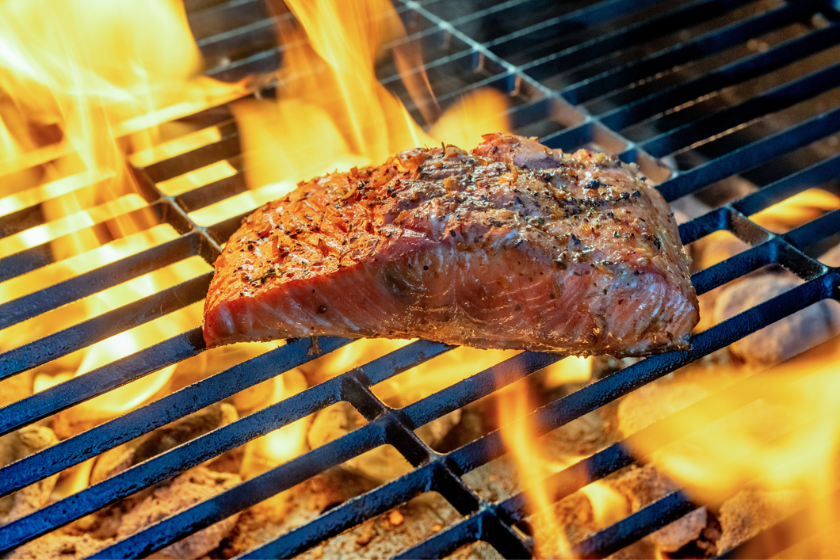
iStock/Getty Images
For a step-by-step guide to grilling salmon, follow this recipe from Torrech:
- Preheat the grill. "Always give your grill at least 8-10 minutes to get up to the desired temperature," says Torrech. Medium-high to high heat is typically recommended for grilling salmon; the 400-450 degrees Fahrenheit range tends to work well.
- 2. Allow the fish to come to room temperature. Letting the fish warm up a bit (rather than cooking it straight out of the fridge) "will help the fish cook evenly."
- Season the fish. Torrech prefers to season with just salt and pepper, but you can use any herbs, fruit zest, or spices that you enjoy.
- Place the salmon on the grill. If you're cooking skin-on salmon, Torrech recommends putting the "skin side down" on the grates to help prevent sticking. "If your grill has a lid, close it. This will give you a more even cook to your fish."
- Check the interior temperature. "Salmon should be cooked on one side," says Torrech. There's no need to flip the salmon in order to fully cook the meat; if you want to get grill marks on both sides, Torrech says that you can flip the fish "toward the end, when the fish is approaching the desired temperature." Like beef, salmon can be cooked "medium rare", "medium", or "well done". Depending on your preferences, you'll want to cook it to 120 degrees (medium rare), 125-130 degrees (medium) or 145 degrees (well done). Use a meat thermometer to test the temperature at the thickest part of the filet.
- Remove from the grill. Torrech points out that the salmon "will continue cooking after it is removed from the grill; be careful not to overcook," so it's worth factoring that into your calculations when deciding when to pull it off of the grate.
To grill the best-possible piece of salmon, give these pieces of advice a try:
Cook over a charcoal grill.
Grilled salmon can be perfectly executed on a propane grill or a natural gas grill, but Harris-Uyidi suggests using a charcoal grill with "hardwood lump charcoal. I fell in love with using lump charcoal during a trip to the Caribbean (St. Martin) and have never gone back. The flavor that the lump coals imparted was incredible, and this cooking style [also] helps food cook up fast."
Use oil to prevent the salmon from sticking.
As Torrech explained, cooking the salmon with the skin facing down on the grate will help reduce the chance that the fish will stick to the grill. But if you'd like an extra level of insurance (or if you choose to grill a skinless salmon filet), "lightly oil the side [of the salmon that] you are going to place down onto the grates. This can be done with spray-on oil [like cooking spray] or by brushing [the salmon] with a neutral oil [like vegetable oil or canola oil." Neutral oils have a higher smoke point than more flavorful oils (like olive oil), so they can withstand the high temperature of the grill.
Immediately add lemon juice to the grilled salmon.
As soon as he removes his salmon from the grill, Riker likes to "squeeze fresh lemon juice over the top." He tells us that "the acidity of the lemon cuts through the fatty flesh of the salmon", bringing an invigorating brightness that "helps to balance out" the richness of the fish.
